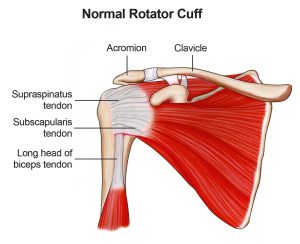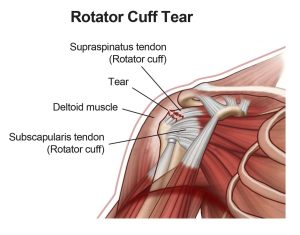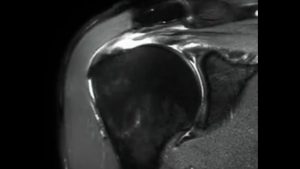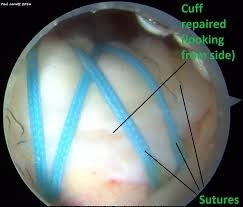Rotator Cuff Tear
The rotator cuff is a group of muscles closely wrapped around the shoulder. They work to keep the ball centred in the socket when we move our shoulder. The muscles can be torn through general wear and tear or after an accident/ fall. If one or more muscles are torn, the movement of the shoulder is no longer smoothly controlled. As a result the shoulder may become weak and painful.



Being a tendon, the rotator cuff cannot be seen on standard X rays which is normal most of the times. MRI scan or Ultrasound scan are needed to diagnose the tear suspected on clinical examination.
The operation is usually done by keyhole surgery (Arthroscopy).


Anaesthesia:
I prefer a General Anaesthetic (you will be asleep) for most patients along with an Interscalene nerve block. This numbs the arm for 12-24 hours and helps with pain relief following your surgery.
SURGERY:
For the operation, I make a few 5mm puncture wounds around the shoulder to allow entry of the surgical instruments, one of which is a camera. The aim of the surgery is to repair the torn tendon. During the operation further damage may be identified within the shoulder that needs addressing.
As the strength of the repair and the size of the tear can vary between patients, recovery period will also vary accordingly.
- To improve your pain.
- To improve your shoulder movement and the function of your arm.
Frequently asked questions
Will It Will Be Painful ?
It may be several weeks before you feel the benefit of the operation. Following the operation, it is important that you take your pain medication regularly to keep the pain under control. This will help you to do the exercises that the physiotherapist will provide you.
The amount of pain varies from patient to patient, therefore take the amount of pain relief you need.
Do I Need To Wear A Sling ?
You will need to wear a sling for up to 4 weeks initially post-surgery. This is to protect the repair in the initial phase of healing. It is also for your comfort. The sling needs to be worn all of the time, except for washing, dressing and doing your physiotherapy exercise.
Sleeping- Keep your sling on when you are sleeping until we advise to remove it. For the first few weeks- you may find it more comfortable to sleep on your back initially, with a pillow under your operated arm for support. This will support your arm so that it doesn’t fall backwards. You may also find it more comfortable to sleep in a semi-sitting position.
When Can I Go From Hospital ?
The majority of patients go home on the same day.
When Can I Return To Work ?
You can return to sedentary jobs after 2 weeks as you feel able. For more manual jobs you should wait until after 12 weeks following your surgery.
Do I Need To Do Exercises ?
Yes, you will be given exercises and should be supervised by a Physiotherapist. The aim of these is to stop your shoulder stiffening up.
Here is a video of the procedure. you can contact me using the details on this website to book a consultation if you think you may have a cuff tear.

